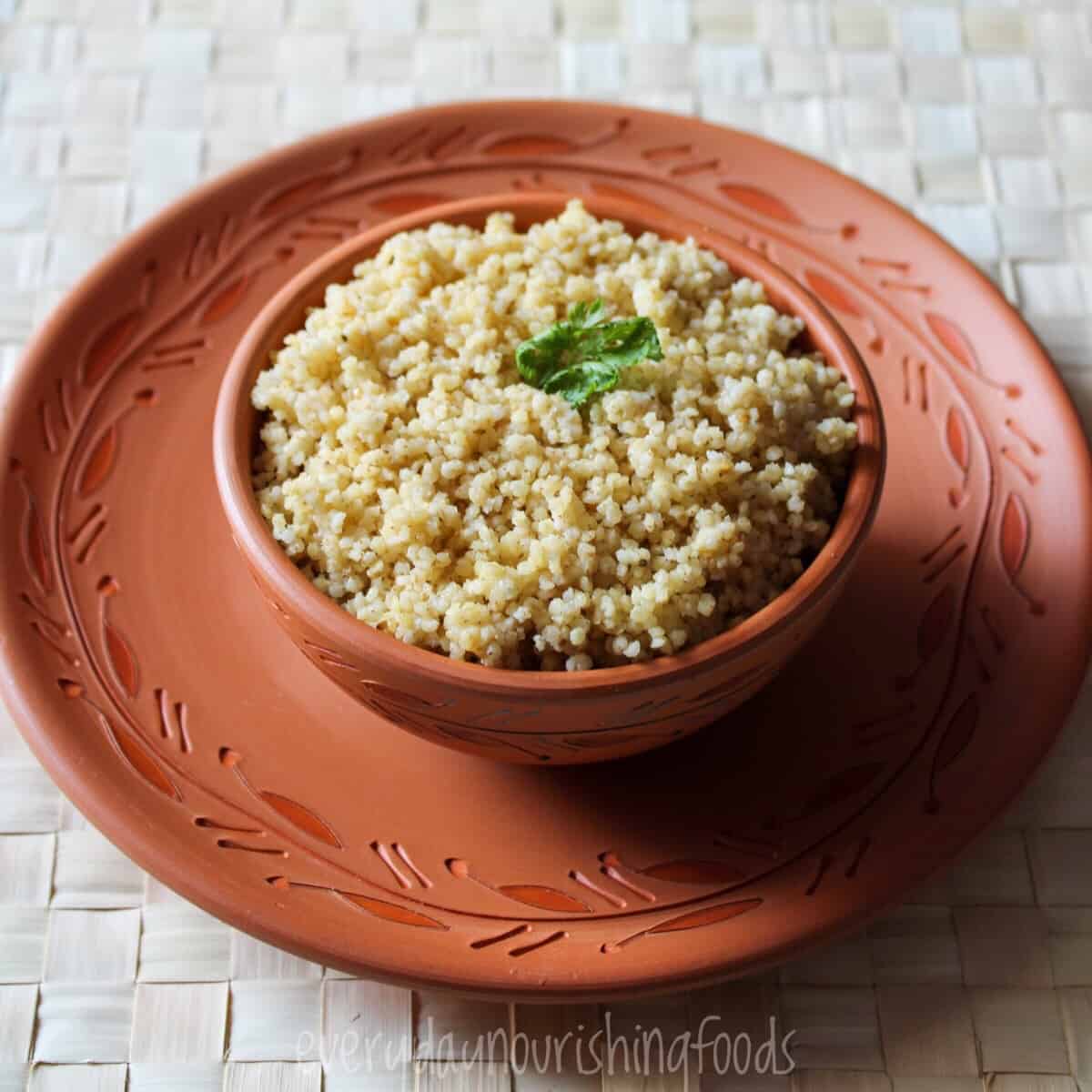

How to Cook Millets? Your Ultimate Guide of Consuming Millets
Unveiling the Millet Marvel: A Comprehensive Guide to Cooking PerfectionMillet, an ancient whole grain that has sustained civilizations for millennia, is experiencing a well-deserved renaissance in modern kitchens. This diminutive seed, hailing from the grass family, packs a nutritional punch while offering a delightfully versatile canvas for culinary creativity. Whether you seek a gluten-free alternative to couscous, a hearty addition to soups and salads, or a delectable base for veggie burgers, millet is poised to become your new culinary companion.
Understanding the Millet Mosaic
Before we delve into the art of cooking millet, let's unravel the diverse tapestry of this ancient grain. While the golden-hued pearl millet is the most prevalent variety gracing supermarket shelves, the millet family boasts a rich diversity, including fonio, sorghum, and a multitude of other cultivars. Each variety carries its unique flavor nuances and textural characteristics, adding depth and intrigue to your culinary explorations.
The Nutritional Powerhouse
Millet's appeal extends far beyond its culinary versatility. This mighty grain is a veritable nutritional powerhouse, earning it the esteemed title of a "nutri-cereal." Packed with essential vitamins, minerals, and a respectable protein content, millet is a boon for those seeking a wholesome and well-rounded dietary regimen. Its gluten-free nature further enhances its allure, making it an inclusive choice for individuals with dietary restrictions.
Prepping for Perfection: Soaking and Toasting
Before embarking on your millet cooking journey, consider embracing the age-old practices of soaking and toasting. Soaking the grains overnight not only enhances their digestibility but also amplifies their inherent nutritional value by neutralizing enzyme inhibitors. Toasting, on the other hand, coaxes out the nutty undertones, adding depth and complexity to the final dish.
The Stovetop Serenade
While modern appliances offer convenience, there's something undeniably satisfying about the stovetop method of cooking millet. This time-honored technique allows you to witness the transformation of the grains firsthand, from their unassuming beginnings to their fluffy, aromatic finale.
To commence, combine one part millet with two parts liquid (water or broth) in a saucepan. Bring the mixture to a gentle simmer, then reduce the heat, cover, and let the millet work its magic for approximately 20 minutes. As the grains absorb the liquid, they'll emerge plump, tender, and ready to grace your culinary creations.
Instant Pot Ingenuity
For those seeking a hands-off approach, the Instant Pot (or any multicooker) offers a streamlined solution. With a slightly reduced liquid ratio (1 cup millet to 1¾ cups water), this modern marvel seals in moisture and cooks the grains to perfection in a mere 8 minutes under high pressure. After a natural release, you'll be rewarded with a pot brimming with fluffy, aromatic millet, ready to be transformed into a myriad of dishes.
The Rice Cooker Revelation
If you're a devotee of the humble rice cooker, rejoice! This unassuming kitchen appliance can effortlessly double as a millet cooker, yielding distinct, fluffy grains without the risk of clumping. Simply follow the same ratio as the stovetop method (1 cup millet to 2 cups water) and let the rice cooker work its magic, utilizing the white rice setting.
Millet Flour: A Gluten-Free Baking Ally
For those seeking gluten-free baking alternatives, millet flour is a versatile ally. To craft your own, simply grind uncooked whole millet in a blender or spice grinder until it achieves a fine, powdery consistency. Incorporate this nutty, slightly sweet flour into your favorite recipes, from muffins and quick breads to heartier loaves and even pizza crusts.
Breakfast Bliss with Millet
Millet's versatility extends far beyond savory dishes, making it an ideal companion for your morning meals. Embrace the comforting warmth of a creamy millet porridge, adorned with fresh fruits, nuts, and a drizzle of honey or maple syrup. Alternatively, incorporate cooked millet into your favorite granola or muffin recipes, adding a delightful crunch and a burst of nourishment to your day.
Millet Salads: A Kaleidoscope of Flavors
Millet's neutral flavor profile and delicate texture make it an ideal canvas for showcasing a kaleidoscope of vibrant flavors and textures. Toss cooked millet with an array of fresh vegetables, herbs, and a zesty vinaigrette for a satisfying and nutritious salad that will tantalize your taste buds. Alternatively, consider incorporating millet into grain bowls, layering it with roasted veggies, legumes, and a creamy dressing for a well-rounded and visually stunning meal.
Savory Millet Sensations
Millet's versatility knows no bounds, allowing it to seamlessly transition from light and refreshing salads to heartier, more indulgent fare. Experiment with millet as a base for veggie burgers or fritters, infusing it with aromatic spices and herbs for a burst of flavor. Alternatively, embrace millet as a wholesome stuffing for roasted vegetables or as a nutrient-dense addition to soups and stews, lending body and substance to your creations.
Millet Baked Delights
Venture into the realm of baked goods, and you'll discover millet's ability to lend a delightful crunch and nutty undertone to your creations. Incorporate cooked or raw millet into your favorite quick bread or muffin recipes, or experiment with millet flour for a gluten-free twist on classic baked treats. From hearty loaves to decadent cookies, millet's versatility knows no bounds.
Embracing Millet's Global Roots
Millet's culinary journey spans continents and cultures, offering a rich tapestry of flavors and traditions to explore. Embrace the vibrant spices of Indian cuisine by incorporating millet into aromatic curries or savory pilafs. Venture into the realm of West African cuisine with millet-based stews and fritters, or explore the ancient traditions of China and Korea, where millet has graced tables for millennia.
Sustainable Sustenance
Beyond its culinary and nutritional merits, millet's appeal extends to its eco-friendly credentials. As a drought-resistant crop that thrives in marginal soils, millet represents a sustainable and resilient source of nourishment for a growing global population. By embracing this ancient grain, you're not only nourishing your body but also contributing to a more sustainable food system.
In conclusion, millet's journey from ancient staple to modern culinary marvel is a testament to its enduring appeal and versatility. Whether you seek a gluten-free alternative, a nutritional powerhouse, or a canvas for culinary creativity, millet stands ready to elevate your cooking repertoire. Embrace its diverse flavors, textures, and global influences, and embark on a culinary adventure that celebrates the rich tapestry of this ancient grain.
